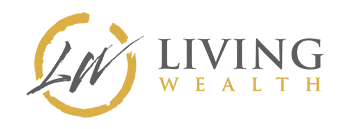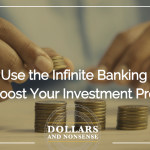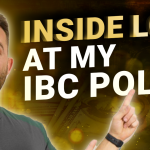In this episode, we share a strategy that will help you boost profits on your investments. Yes. This works with almost any investment you make.
A lot of new listeners may believe we are against investing money. However, that is not the case in the least. In fact, we’re pro-investment; with a twist: stack the strategies to maximize your profits and returns. It sounds difficult, but it isn’t. Find out more in this episode.
How to Boost Profits on Your Investments Topics Discussed:
- Making outside investments using policies
- The nuts and bolts of how this works
- How stacking strategies pays off
- What happens when your lazy money gets more than one job and becomes hyper-productive
- Doing an end run around unnecessary taxes
Episode Takeaways:
- Infinite banking is being your own banker. Banking is about keeping money in motion. It’s a new way to work with money for the individual leveraging the power formerly only wielded by banks.
Episode Resources:
Podcast transcript for episode 78: Boost Profits on Your Investments
Nate: In this episode we will discuss a strategy that will boost the profit you can make in almost any investment that comes your way. She’s Holly, and she helps people find financial freedom.
Holly: He’s Nate, he makes sense out of money. This is Dollars and Nonsense. If you follow the herd, you will be slaughtered.
Nate: We’re really happy that you’re listening and we hope it’s beneficial to you. If you’re benefiting from this podcast, it would mean the world to Holly and me if you would go out and rate it, review it, share it, and help get the word out that there’s a better way to work with money and that’s really what we’re here to talk about today, is a way that you guys can boost the profit of any investment that you make. And it is going to have a lot to do with infinite banking, so that’s the concept that you hear on our podcast quite a bit, this concept of infinite banking.
And Holly, one of the first things I wanted to mention is that a lot of times when people hear our podcast or they come on and they start learning about this process, they just assume that we may be against investing money because we’re such a big proponent of infinite banking and we wanted to set the record straight today that we’re not against investing and actually how we can use these policies and this strategy to help you make even more money on any investment that you make.
Holly: And I think one of the keys, Nate, is that we make a decision or an assumption that somebody is anti something where you and I really aren’t anti-investing at all. We just feel like infinite banking is a way better option to put your money into first and then do the investment. So I think it’s key to say infinite banking isn’t really an investment, it’s just a better product or tool to help you make your investment more profitable.
Nate: Exactly. Right. And before this podcast we were talking about how it’s not even just investments. Part of why we talk about it so much is that it has so many implications in your life to help make you more money, living life the same way that you’re already living just by changing how you’re doing things, that’s buying a car or making a down payment on a home or going out and making investments in the various ways that you may already be fond of. We’re just going to get into the nuts and bolts of how you can use a policy to make outside investments and then what that does to your bottom line to help you make even more money than you would have otherwise made.
So as we get into this, Holly, one of the things to mention is that infinite making is all about banking. And you hear us talk about this, banking is about money being in motion, it’s not an investment. It’s a new way to work with money. And so we wanted to dive in today on how you can use this and exactly what you’re going to get out of it when you do use it to make investments and whatever it is that you enjoy investing in.
Holly: And I think one of those keys is that one of our biggest proponents is that you are constantly keeping your money in motion. And really what we’re doing, Nate, is by putting it through a policy and then using that money through a loan to make an investment is we’re really doing what a lot of banks are doing, they’re never letting our deposits sit and collect dust in their vault. And so in the same way, we don’t want your money just to sit somewhere only doing one thing for you. And so part of that is to keep it in motion, and the only way to do that, that I know of, is through infinite banking.
Nate: But first thing is first, there’s a couple ways to do it. So the typical way to make an investment, so you want to invest in the stock market, you want invest in in real estate, you want to go buy gold and silver, whatever it is, Bitcoin, I don’t really care what it is, whenever you go out and make a purchase or invest money into various forms of assets, the money to buy those things has to come from some place. You’ve got to have the money. And so when we got the money, then we can make the investment. And what we’re trying to deal with is how changing where the money is being stored and being used from is going to make a difference. So the first thing to talk about is with infinity banking, we’re going to be moving money into a policy and when we pull it out to make an investment, we’re going to generate a couple of advantages compared to the old way of doing it.
So as we’re making this comparison, we have to understand you can make an investment without infinite banking. You don’t need a policy, obviously, to go and invest your money. But so we’re going to compare just investing cash into these various forms of assets and [inaudible 00:04:37] policy to do it and which one’s going to give us the most money and the highest rate of return at the end of the day, which funding of the investment, which funding mechanism is going to work the best.
So the reason why, the first reason why, I think that a policy is the best tool to use is because any time you put money into a policy and it generates cash value, we can leverage that money. We can borrow against our policy. And no matter what we use it for, the policy is going to continue to grow and continue to compound on 100% of the cash value that was there before we took a loan out. So if you build up $100,000 of cash value and take money out of it, 50,000, whatever the number is, the actual compounding of the policy stays the same. So what this means is that you’re able to generate profit in two places, you’ve got your policy that continues to grow and you’ve got your investment that will hopefully continue to grow as well.
So now you’ve got two assets going simultaneously as opposed to the old way of doing it when we just take cash and send it to the investment. Now we have the investment working, but that cash is obviously no longer there. It’s no longer doing anything. So that’s why you hear us talking about all the time having your money to do multiple things at the same time allows you to make profit than just having it do one thing at a time.
Holly: And a simple way of thinking about that, Nate, is that if we had saved the hundred thousand dollars in a savings account or a CD and we take that money out of the savings account or the CD and we put it in the investment, it no longer is earning any interest whatsoever. So the hundred thousand you took out and you put it in the investment, and all it’s doing is hopefully growing in the investment you took the money out for. Versus the same thing with a policy, if you put it in 100,000 in the policy and had built up that cash value, you literally borrow it but the money actually never left. You used your policy as that collateral and so therefore you have the money growing in the policy, uninterrupted compounding. And then plain and simple, you also have it in your investment. So which would you want to do, take $100,000 out and just invest it and have no growth whatsoever taking place or do you want to have it still growing for you and be able to take that same money and invest it?
Nate: So that’s the first way it can help, instead of your money just doing one thing, you can do two things at the same time. But the next way that it really becomes very powerful is that any time you take a loan from a policy and you use that to make an investment, or it can be an investment like a stock market, real estate, something like that, it also could be what you would call an investment into your business. So anytime you use the policy for investment or for business purpose, any loan interest that you pay back to the policy, for the policy loan, becomes deductible.
So not only is it going to continue to grow the entire time and be profitable in two places, in the investment and the policy, but on top of that you’re going to get this additional tax deduction that you can create when the money comes from the policy. I know we might get a little analytical today, but I thought I’d give a quick example of how that really works and hopefully maybe you can, if I get too complex or too carried away, you can simplify it for us.
Holly: And before you do that, I just want to make sure everybody heard what Nate was saying. The interest paid on the loan from the policy is deductible. When we take it out of the bank, we don’t get any deduction.
Announcer: Have you ever wondered how to stop worrying and just make and keep more of your money? We believe in challenging the status quo. We believe in divine conventional wealth tools while maintaining traditional values. After all, most of those conventional tools only ever seem to make someone else on the inner circle rich. You can become debt free, in control, secure and achieve financial significance. Private family financing can be used in your life and even your business. Let us help set you free from worry. Visit livingwealth.com/freedom to receive your free copy of the Tree of Wealth. You’ll learn about the tools banks themselves use and rarely speak about openly. These are the strategies used to launch Disney, JC Penny’s, and countless successful families.
For more than 46 years, Living Wealth has focused on treating clients with respect and honesty while helping them achieve financial freedom. Learn how to turn your hard work into significance. Visit livingwealth.com/freedom to instantly receive your free copy of the Tree of Wealth. You’ll be enabled to have cash today and in the future. It’s more than mere infinite banking. It’s private family financing. Don’t let banks and Wall Street dictate your financial future. Go to livingwealth.com/freedom to instantly receive your free copy of the Tree of Wealth. Now, back to Nate and Holly.
Nate: Yeah, I don’t care how much money you have, but we’ll just say you’ve built up $100,000. Now, I’m going to compare having $100,000 of cash and $100,000 of cash value. So the guy who builds up a hundred thousand dollars of cash, he says, “You know what? It’s time for me to put this money to work,” which is obviously true, that’s a lot of cash lying around doing nothing. So he sends it out to an investment, and let’s just say that investment generates a 20% rate of return. Great rate of return. So he’s got $20,000 that that investment produced. Well, since he now has $20,000 of profit, who comes knocking at his door after making that money?
Holly: Uncle Sam.
Nate: Uncle Sam. He’s a friendly guy, good uncle. He comes and says, “Well now that you’ve made some profit, I need my share of it,” and let’s just say that you’re in the 30% tax bracket between the state and the federal government, whatever it is. And so on $20,000 of income of profit, you would owe 30% tax, which is $6,000. So you cut him his check, Uncle Sam, $6,000, and you’re left with $114,000 of net profit after tax. Still pretty good, 14% return after tax. We’re still doing really great.
Now let’s flip the scales. Let’s say we built up that same hundred thousand dollars, we just built it up in a policy and we take a loan against the policy and we send it to work in the same investment. So the same investment obviously is going to generate 20%, and so we have $120,000 in that investment. However, we didn’t just pay cash for it. We took a loan from our policy to buy it. And the policy loan rate of about, 4 1/2 to 5%, depending on which company you’re with, let’s just call it 5%, we’ve gotten $20,000 of profit but we owe 5% back to our policy. So we write a check for $5,000 that’s deductible back to the policy.
So now instead of having $20,000 of profit on our tax return that we’re going to owe taxes on it, we only have $15,000 of profit. And at 30% of 15,000, we only owe $4,500 of tax. So after we paid the tax and the policy back, we’re left with like a 111,500 bucks or 110,500, I believe is what it was. But what happened inside the policy, Holly? It never stopped growing. Absolutely. And do we owe taxes on the growth of a policy?
Holly: No. It’s tax-free, uninterrupted compounding.
Nate: Absolutely. So easily, if you’ve got $100,000 in your policy, the next year it’s worth 105,000. So the $5,000 of growth, we may have paid 5,000 [inaudible 00:12:42] but it grew by $5,000 that we don’t have to claim. So when we add together the 110,500 that we have left in our investment and the 5,000 of profit that the policy generated, we’ve actually got $115,500 in our total cash available to us when we use infinite banking to fund our investment as opposed to having $114,000 when we just used our cash to do it. So we made an extra 1500 bucks without doing anything differently, and that’s only in the first year of investing.
As Holly says, it doesn’t end there actually because that compounding is going to continue in that policy for forever. So in the first year we made 5,000 bucks, but the next year it will be even higher and higher and higher. And so all the way down the line, it’s going to be continually increasing. How much more we’re going to make by having simply changed where we were building up the money to make those investments? Does that make sense, Holly? Did I do an okay job?
Holly: I think you did a great job and I just want people to understand we did nothing different other than use a policy. We still paid Uncle Sam, we still had our money grow, but we made even more money just by having our money do more than one thing. It didn’t just sit in a policy. We’re not taking any shortcuts here. You’re doing the exact same things, exactly what Nate said, you’re just adding one step of you use the policy first in order to make that investment happen.
Nate: Yeah. So we got the compounding of the policy for forever, supporting a death benefit that we didn’t even mention, but that’s existence is probably way higher than any cash value, and we get a tax deductible. We’re having our money to do so many things at the same time, we’re creating new deductions, we’re having it continuously compound even while we use it, supporting a death benefit. I mean, we can go on and on about what the money is doing ever since we changed it and we still have the power, the ability, to go chase after higher rates of return in the various investment alternatives that come up if you have a good opportunity to act on. So I love it.
And this can be taken to an extreme. I don’t think everyone’s going to be able to do this, but we’ve had some clients who have really taken this to the extreme, especially in the world of real estate. I mean, we have a lot of clients, it seems to be a perfect marriage if you’re interested in getting into real estate and investing in real estate, building up capital and a policy and using that to fund those deals. It’s become very popular for a lot of reasons. It’s amazing. But [inaudible 00:15:18] we have one individual who essentially doesn’t pay any income tax anymore. A full time real estate investor has funded millions of dollars in property purchases over the last probably 15 years, one of our long time clients, and has used policies to fund every single investment in real estate, practically every single one, that he has invested in.
So his income from these properties is actually very high and he’s being helped out already as far as taxation goes with the depreciation of the property. So his income on paper is not exactly huge. It’s not insignificant but it’s not huge because he’s depreciating so much while the properties are still depreciating.
Nate:
But on top of that, let’s just say at the end of the year, his tax go… His accountant comes in and says, “Okay, you made, on paper, $300,000 of profit that we owe taxes on.” However, he’s got, I don’t know, Holly, maybe eight to 10 million out in loans against his cash values that he used to buy these properties in the first place. And so all he’ll do, the interest bill comes due from the policies, he’ll write a check for the $300,000 that he had an income to pay the interest on the policy loans, recaptures all that money in the policy, the policies are growing by quite a bit more than the interest he owes by a long shot, he writes a check to them, is able to expense 100% of his income and keep all the money. It’s just in the policy. So now his lifestyle is actually paid for mainly from his policy cash values and their growth. And he rolls his rental income into the policy and was able to essentially pay zero in income tax though he’s really is quite wealthy by how he’s built the system.
So I’m not trying to say that anybody can get there very easily, certainly that’s unusual, but that’s how big it can get and some of the powers of just trying to see the fruition of it. If every investment you make is from a policy money first, you can really start taking a big dent in your tax liability and keep more money in your pocket.
Holly: And I think one of the keys there that Nate said is it’s a longstanding client, so this doesn’t happen overnight. It took a long time for him to build up the portfolio he wanted to be able to invest the money in the properties. The key in there though is, remember, he’s… When I say hundreds, he does have hundreds of properties, but he’s probably spent, like Nate said, around eight to $10 million in buying these properties, but that’s eight to $10 million that went through our policy that’s still growing tax free for him and his family, uninterrupted, compounding year after year.
Nate: Exactly. It’s really remarkable. We love this story, Ray as well, the founder, he’s been on our podcast before, but he’s built an entire lending empire of probably, I don’t know, five million or more, plus… I don’t keep track of how much has been lent out in his private finance company. All of that funding from his policies, so the vast majority of the income it produces, he gets to keep. It just happens to all be falling back into policies and he writes off quite a bit of the profit it makes, so it’s a perfect marriage.
And on top of that, as I wanted to mention as we’re wrapping up Holly, that it doesn’t just work for investments either. So if you’re listening to this and you’re a business owner, you own a business, the same strategy works by funding various expenses or expansions or whatever equipment, whatever it is, with a policy loan allows us to actually create business interest expense and still keep all the money. Just having it flow through a policy so we can reduce taxes, doing the same things you already doing, just moving money around back and forth and can create new deductions. So it actually is really fun to keep money in motion. We’re not against investing money by any means. We’re just proponents of this banking system that is designed to change how you fund the various things in life from the simple things, vacations and cars, taxes, charitable giving, investments, business investment, all sorts of things can be improved just by changing how you work with the money in general.
Holly: It’s not just for one person that wants to do investing, small business owners and large business owners, wherever you fall in there, you can use that policy to really help your business and to really be able to buy equipment or purchase something you need but still have the cash growing for you and be able to deduct that interest.
Nate: So whenever you hear us talk about deductions and making things more efficient, there’s nothing tricky here. It’s not even a gray area. We’ve got the documentation to back it up and an opinion letter from a CPA that he did the research for us. So you can come trust us. If your accountant wants help in this, we can help out in understanding there. But just know that infinite banking is not just some new place to invest money. Though, I wouldn’t say Holly and I both have quite a bit of money in cash values right now because we do love the security and growth inside of it that’s tax free, but we’re not against investing money. We’re just saying there’s a new way to do many things, investing one of them, and you can actually make a lot more money after tax profit. And due to the compounding growth, it just gets better and better inside the policy.
It’s not a short term gig, 15 years is going to come by and you’ll be in this amazing place if you do decide to start running more of your business, more of your investments through a policy as opposed to just sending cash out when it comes in.
Holly: So really think about that when you’re thinking of, as a business owner, that next purchase, whether it be equipment you need to buy or an expansion, something like that. And the other thing is is that, as an investor, if you could have your money do more than one thing and earn more than just the growth of an investment and that interest that you make, the production of that, but also the fact that it grows tax free and the policy is just an added bonus for you all the way around. So I really hope you understand that [inaudible 00:21:19] just say don’t invest as much as it is to say invest more wisely in the way that you can have your money do more than one thing.
Nate: Exactly right. And one last thing that I was going to say as well, Holly, is that by using a policy to funnel your investments through, it adds another benefit. As you said, we’ve added all these benefits, but at any point in time you can sell out of some other investment and move all the money back in to your policy where it’s going to continue to grow and continue to be able to produce income and profit for you. So it’s been really beneficial for those investors who may, at some point, want to get out of the stock market or out of real estate and move their money into a safer place. [inaudible 00:22:03] we borrow all the money to go make those investments, we can always sell those and put them right back into the policy and avoid any recessions, or depressions, or market crashes or real estate bubbles that come along the way. So a lot of value can be created and a lot of flexibility can be put out by having the policy be the main source of funding. This has been Dollars and Nonsense. If you follow the herd, you will get slaughtered.
Holly: For free transcripts and resources, please visit livingwealth.com/e78.









